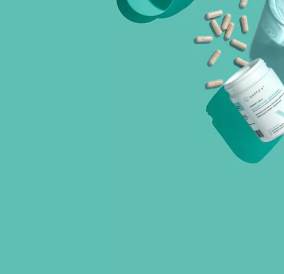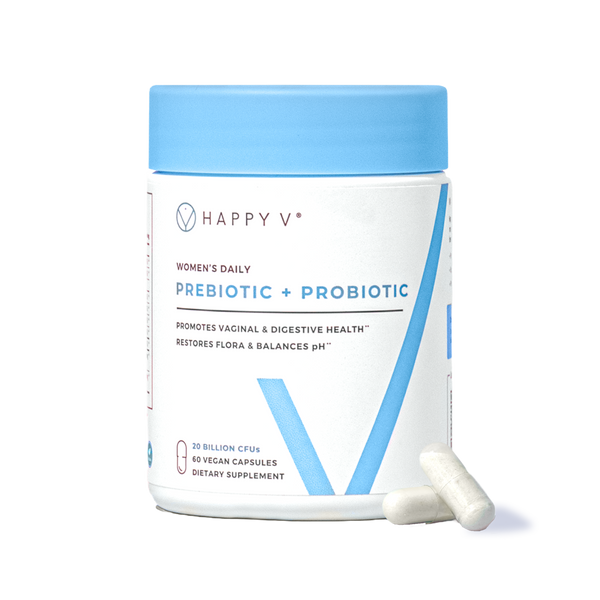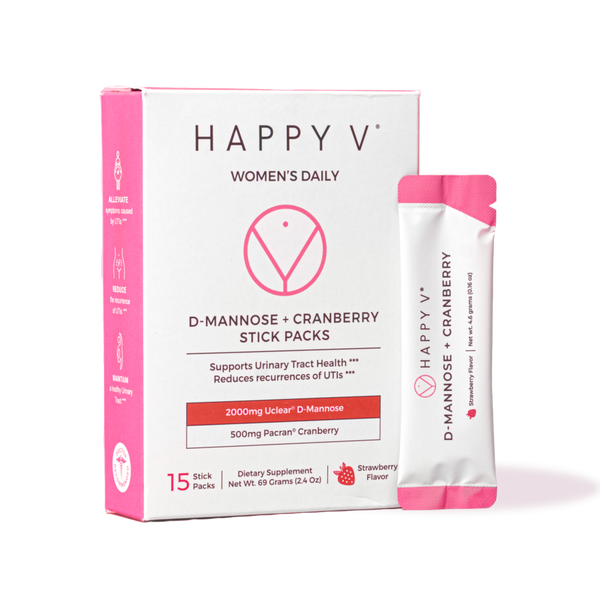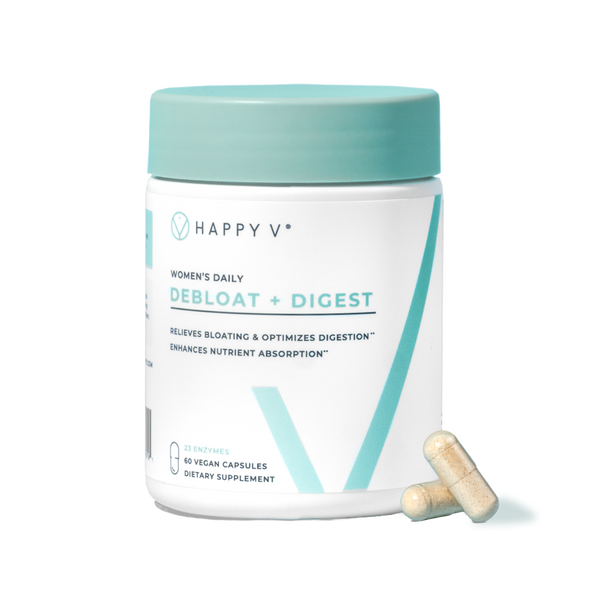- Fact Checked
- June 12, 2020
- 13 min read
Table of Contents
The human body is made up of millions of cells, amazing, right? What’s even more amazing is that despite being so high in number, they are still outnumbered by millions of tiny microorganisms residing on and in the body by 1:10 ratio. So, for example, if you have 10 million body cells, then there might be 100 million microbes within your body.
What is the gut microbiome?
Being so abundant in number, they are present almost in every organ of our body, such as the skin, mouth, intestines, and vagina.
All types of microorganisms, such as bacteria, fungi, viruses, and protozoans that inhabit our intestines are collectively known as the gut microbiome. Gut microbiomes are very large and come from four different phyla or groups – Actinobacteria, Proteobacteria, Firmicutes, and Bacteriodetes. The most common organisms that you might have heard of are Lactobacilli, Bifidobacteria, Coliform bacteria, Streptococci, Yeasts, Proteus, Clostridia, Staphylococci, and more. (1)
(Note: Two happy and healthy individuals might have different gut microbes depending on their mode of delivery, how diverse their diet is, their environment, and stress.) (2)
The gut microbiome plays a significant role in the maintenance of women’s health. They affect our metabolism, immune system, hormone production, and help our body in fighting off bad bacteria and diseases too. However, dysbiosis and bacteria in the gut microbiome can potentially lead to diseases and dysbiosis in the vaginal microbiome too. (1)
What leads to an unhealthy gut microbiome?
-
Antibiotics.
Exposing your body’s systems to antibiotics might be necessary in some cases, but over-prescription or over-exposure can lead to dysbiosis in the gut. Antibiotics, as you might know, are meant to kill harmful bacteria, but how do they tell good bacteria apart from the bad? Well, antibiotics are non-specific in nature, meaning that they do not eliminate one specific type of bacteria and instead might kill off both harmful and good bacteria, leading to a breeding ground for opportunistic bacteria to grow and cause harm. -
Lack of prebiotics/probiotics in the diet.
Prebiotics are compounds present in your diet which your body cannot digest; however, they become food for good bacteria called probiotics. Many vegetables, fruits, and whole grains contain fibrous fibers rich in prebiotics, especially onions, bananas, oatmeal, asparagus, and more. Similarly, foods like yogurt, kombucha, kimchi, and pickles are rich in probiotics. Eating them in adequate amounts and daily allows the beneficial bacteria to grow and, in turn, make your gut microbiome, vaginal microbiome, and intestines strong and protective. -
Exercise.
Cycling, jogging, swimming, aerobics, and walking, no matter which form of exercise you do, it’s important. It’s important because it makes good bacteria grow in number and diversity, keeps your immune system healthy, produces anti-inflammatory compounds, and short-chain fatty acids (SCFAs). -
Eating unhealthy processed foods.
Diets rich in fats, processed sugars, salt, and other ultra-processed ingredients provides an ideal feeding ground to bad bacteria. Once they outgrow beneficial bacteria in numbers, that’s when problems start to arise. (3)
What is the vaginal microbiome?
The vaginal microbiome is the totality of microorganism species present within our vagina. The bacterial species such as Lactobacilli, including L. Acidophilus, L. Crispatus, L. Rhamnosus, and others usually dominate the vaginal microbiome of healthy, women of reproductive-age.. Other species include Gardnerella Vaginalis, Prevotella, and more. However, again, two females can have different vaginal microbiomes depending on factors like diet, stress, exercise, hygiene, and more.
The vaginal microbiome in our body is the perfect example of mutualistic association, they both benefit from each other.
This association works in a very beautiful way: good bacteria gets its food from vaginal secretions and cells and grows in vast numbers. On the other hand, these bacteria control the overgrowth of bad bacteria within your vagina, which otherwise may lead to conditions like bacterial vaginosis and vaginal yeast infections. (4)
What leads to an unhealthy vaginal microbiome?
There are multiple factors that can cause dysbiosis in the vaginal microbiome such as diet, use of antibiotics, multiple sex partners, douching, unhygienic practices, and more.
Antibiotics cannot differentiate between good and bad bacteria. Over-exposure to these antibiotics may stop the growth of good bacteria or kill them all together leading to overgrowth of bad bacteria. (5)
Health experts advise against douching because in the process of ‘cleaning’ your vagina it removes the protective bacteria from your vagina. Once there is no protective barrier for opportunistic bacteria they grow and lead to BV, yeast infections, and other health conditions. (6)
Unhygienic practices such as not changing clothes immediately after swimming or exercises, wearing tight undergarments, and staying in sweaty clothes provide an ideal environment for the growth of bad bacteria.
Eating fats, sugar-laden diets, and ultra-processed foods such as fast food are synonymous with providing food for bad bacteria to grow. They feed on it and flourish ultimately overpowering good ones. (7)
How is your gut health and vaginal health linked?
Your gut contains its own diverse microbiome, like that of your vagina. Your gut is where your food is broken down and then turned into nutrients that are beneficial for your entire body. However, without the proper nutrients, your gut can contribute to various other infections throughout your entire body – I think you can see where we’re getting at.
To maintain OVERALL equilibrium in your body (including optimal vaginal health), it’s important to have a healthy gut too! To keep your gut healthy, you need the right number of good bacteria to fight off the unwanted “bad bacteria” – sound familiar? It should because the same thing happens in your vagina.
How can you improve your gut health and vaginal health?
We’re glad you asked! Without a healthy gut, it’s only that much more difficult to maintain a healthy vagina. Now that science has demonstrated the importance of having a healthy gut as well as a healthy vaginal microbiome, let us tell you a bit about our improved product that supports both.
Our Probiotic from the very beginning has always contained the probiotic strains from HOWARU ProFem, which includes L. Acidopholis LA-14, and L. Rhamnosus HN-001. These strains have been clinically proven in a double-blind controlled study to be well tolerated and lead to better probiotic colonization of the vagina in nearly all participants receiving the probiotic complex compared to those who did not. This leads to an increase in beneficial bacteria in the vagina. Therefore, displacing harmful bacteria and creating an acidic environment for probiotics to thrive in. This is ideal in situations of recurring BV, Yeast Infections, urinary tract infections (UTIs), and overall vaginal wellness.
We’ve included patented HOWARU® Restore in our new and improved Probiotic + Prebiotic. Its unique benefits are attributed to its formulation, which is composed of equal amounts of bacteria adapted to upper intestine support along with lower intestine support. This clinically-proven formulation has been shown to not only quickly promote digestive regularity, but also restore overall digestive comfort.
We’ve also included a prebiotic from PreforPro® in our formula. Prebiotics are important because they help fuel the probiotics in your body, allowing them to better populate your gut and your vaginal flora. PreforPro is the only non-starch and non-glucose-based prebiotic that works to improve probiotic efficacy by acting enzymatically. And unlike other prebiotics, PreforPro has clinical studies proving that it works at 15mg, fueling the probiotics in your body, making sure they’re equipped to do their job in keeping you healthy and happy!
In short, it helps your gut and your vagina!
How Probiotics and Prebiotics can help improve your gut health and vaginal health?
Probiotics are tiny living organisms (bacteria and yeasts) that are good for your health, especially digestive and immune health. These good microbes are also essential for controlling the growth of bad bacteria and enhancing immunity.
Probiotics can either be obtained from fermented foods such as yogurt, sauerkraut, and kimchi, etc or they can also be taken as probiotic supplements also known as probiotic dietary supplements. Probiotics are classified into different types depending on the probiotic bacterial strain. For example, Lactobacilli and Bifidobacterium are common probiotic bacteria whereas Saccharomyces Boulardii is a common probiotic yeast.
Probiotic supplements and probiotics containing fermented foods are used extensively for their innumerable benefits on the gut and overall health.
Researchers have shown that taking probiotics might relieve diarrhea, constipation, and irritable bowel syndrome. They are also helpful in maintaining the relapse of ulcerative colitis and Crohn’s disease.
The beneficial effects of good bacteria (probiotics) are not limited only to digestive health, they can also help you in maintaining urinogenital health and overall vaginal health. Lactobacilli sp. of probiotics produces lactic acid which helps in keeping the vaginal environment acidic (pH between 3.5 to 4.5). An acidic vaginal pH level prevents the growth of bad bacteria and therefore, keeps it infection and disease-free.
Probiotics can be used for the prevention and sometimes for the treatment of common vaginal infections such as bacterial vaginosis or BV, vaginal yeast infections and other sexually transmitted infections. (8)
If you have ever experienced BV, Yeast Infections, excessive vaginal discharge, unusual odor, or irritation of your vulva and/or vagina. Then taking vaginal probiotics will help improve your vaginal flora by increasing the amount of lactobacillus (good bacteria) and help prevent the overgrowth of bad bacteria or pathogens. However, the effect of probiotics working quickly can vary from person to person due to various lifestyle factors such as:
- Medications: Antibiotics, birth control.
- Feminine Hygiene Products: scented synthetic menstrual products (tampons, pads, menstrual cups, menstrual disks.)
- Sex: Semen, sex toys, lubricants, latex condoms.
- Seasons/Climate: Hot and humid months like Spring and Summer.
- Foods: Different types of foods high in sugar like processed foods, artificial sweeteners, fried foods, ect.
Before starting a probiotic regimen make sure to look at your lifestyle and see where improvements can be made.
Probiotic myths. Why some of these methods you’ve heard of are not effective?
Inserting yogurt into your vagina may help in treating vaginal infections, all probiotics are the same, yogurt in any form is a probiotic, probiotics can be an alternative for medications. These are some of the common things that you might hear about probiotics. Myths or facts we’ll talk about that in a minute, what’s more, important is that you get a complete understanding as to how they actually work.
Taking probiotics doesn’t mean that by consuming a cup of yogurt as a snack will solve all of your digestive or vaginal problems. For probiotics to work it’s important to take them in an adequate amount for a period of time.
Probiotic myths. True or False?
Let’s break down the myths.
Myth #1: All probiotics are the same.
False! Different probiotic strains have different benefits. For example, lactobacillus acidophilus helps in digesting lactose, enhances immunity, and keeps the vaginal environment acidic. L. rhamnosus is known for its weight management, digestive and immune health benefits. L. reuteri is good for oral, heart and immune health. Similarly, different strains of Bifidobacterium are beneficial for immune health, digestive health, feminine health, and more. (9,10)
Myth #2: Inserting probiotics in the vagina for BV or Yeast Infections.
False! If you insert yogurt directly into your vagina is true to some extent, however, there is very limited evidence of the effectiveness of inserting yogurt filled tampons into your vagina. Basically, for probiotics to work, you need to have them in a sufficient quantity and for at least a specific period of time. Therefore, inserting a spoonful of yogurt in your vagina won’t help but might lead to irritation, pain, or make the problem worse than before.
Myth #3: Yogurt, in any form, is a probiotic.
False! Here’s the reality, plain yogurt contains beneficial probiotics, however, many important species should be added to enhance its probiotic effects. What’s worse is that when when you eat flavored, high sugared yogurt, and consider it beneficial for your health you’re actually doing more harm than good. Eating artificial sugar in yogurt actually becomes food for bad bacteria and can be harmful to your vaginal health.
What to look for in a probiotic?
When buying a probiotic it’s important to look for a few things such as the number of strains, quantities, CFUs, and packaging. Ideally a probiotic should contain several probiotic strains to mimic the gut microbiota and that too in adequate amounts.
Mostly, labels on probiotic supplements claim to have many strains in them but, they contain just a few. Usually, they contain generic strains that have no scientific evidence nor clinical trials proving to be effective.
That’s why you should make sure the probiotic strains that you’re looking for have gone through clinical trials and have been proven to colonize the gut and vaginal flora. To show you what to look for we’ve included the study that was done for Happy V’s Probiotic + Prebiotic strains.
Last but not the least, it’s important to look at CFUs, CFU is the short form for colony-forming units, it means the number of microorganisms that are capable to grow and divide. We’re sure you’re familiar with that term and have seen it before.
Pro tip: whenever you see products claiming 60, 100, 150 billion CFU’s, steer clear from marketable claims and stick to the clinical studies (if there are any) proving that the strains are dosed at the effective dosing requirement.
How long until you start to see results with a probiotic?
According to the International Probiotics Association, probiotics get to work rather quickly but that being said depending on various different lifestyle factors you might have to be patient.
Minor problems like bloating or indigestion might seem to go away very quickly following the intake of probiotics, however, major problems like irritable bowel syndrome (IBS) etc. might take weeks. Depending on the time required by different strains to grow and divide and the problem you have probiotics might take different times to work. Typically, a probiotic takes 2-3 weeks, however, they do have strong beneficial effects on immune, digestive, vaginal, and overall health which are attained over the years of taking probiotics daily.
How to maintain your vagina’s health over time?
From diet to exercise, feminine hygiene products, and medications to supplements, everything affects your vaginal health. Here’s what you can do is to keep track of your vagina’s health.
Make sure to avoid over-exposing your body to antibiotics as they might cause dysbiosis.
Eat foods rich in probiotics and prebiotics such as yogurt, garlic, bananas, pickles, asparagus, and other foods rich in probiotics and prebiotics. You can also supplement with high quality and effective probiotic and prebiotic.

Liquid Chlorophyll
Our Happy V® Liquid Chlorophyll was formulated with a water-soluble Chlorophyllin that is better absorbed by the body. It works to reduce unwanted body odors, improve digestion and support gut health.
Learn moreAvoid having multiple sex partners and unprotected sex to keep yourself safe from contracting infections or getting harmful bacteria from them. Use protection from sexual health products like condoms or spermicide that do not contain ingredients that might mess with your vagina’s pH.
Good hygiene practices are also very essential in maintaining good vaginal health. Wearing tight undergarments, not allowing your vagina to breathe, staying in wet or sweaty clothes and not wiping properly (from front to back) might lead to vaginal infections.
Douching should be discouraged and what’s more important for you to know is that your vagina is designed to clean itself. So do not fall into the trap of purchasing “scented vulva deodorants or vaginal douches” because the chemicals in them can cause your vagina’s pH to shift.
Our experts continually monitor the health and wellness space, and we update our articles when new information becomes available.
- Published on: June 12, 2020
- Last updates: February 08, 2025
Written by Happy V Team
Edited by Happy V Team
Our experts continually monitor the health and wellness space, and we update our articles when new information becomes available.
- Published on: June 12, 2020
- Last updates: February 08, 2025
Written by Happy V Team
Edited by Happy V Team









